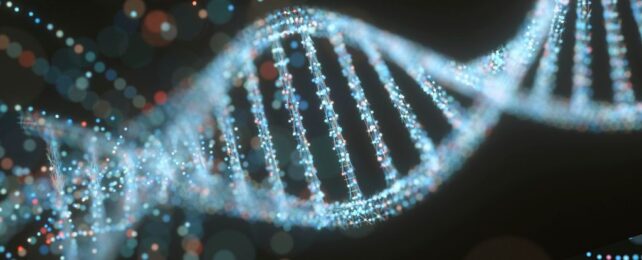The random nature of genetic mutation implies evolution is largely unpredictable. But recent research suggests this may not be entirely so, with interactions between genes playing a bigger role than expected in determining how a genome changes.
It's known that some areas of the genome are more likely to be mutable than others, but a new study now suggests a species' evolutionary history may play a role in making mutations more predictable too.
"The implications of this research are nothing short of revolutionary," says University of Nottingham evolutionary biologist James McInerney.
"By demonstrating that evolution is not as random as we once thought, we've opened the door to an array of possibilities in synthetic biology, medicine, and environmental science."
University of Nottingham biologist Alan Beavan and colleagues harnessed the calculating power of AI to investigate more than 2,000 complete genomes of Escherichia coli bacteria.
Bacteria are particularly tricksy when it comes to changing their DNA, being rather adept at stealing genes from their environment and incorporating them into their genome. Known as horizontal gene transfer, the process gives bacteria ready access to new traits, such as neatly sidestepping antibiotics – no pesky waiting around for selection to work across generations required.
Curiously, horizontally transferred genes belonging to the same basic group can end up parking in different positions of the bacteria's genome. By investigating horizontal genes in different places, the researchers were able to see how the genes' immediate environment influenced them.
They were able to test renowned evolutionary biologist Stephen J. Gould's thought experiment: replaying a tape of evolutionary history would result in a different, unpredictable outcome each time, since evolutionary paths depend on unpredictable events.
If this is true, the bacteria's genome would keep evolving randomly after acquiring a new horizontal gene. But the AI found patterns of predictability across these thousands of "tape replays" after these gene acquisition events.
"We found that some gene families never turned up in a genome when a particular other gene family was already there, and on other occasions, some genes were very much dependent on a different gene family being present," explains University of Nottingham microbiologist Maria Rosa Domingo-Sananes.
This network has multiple individual clusters, in which we can infer positive and negative relationships between genes. pic.twitter.com/rlZrXECvNH
— Maria Rosa Domingo Sananes (@blackpassiflora) January 5, 2024
So the history of the genome, amounting to which genes it has at the time, can determine which genes it will or won't have in the future. We've seen hints of this before through genes that are closely physically positioned on genetic molecules being lost or gained together – linked genes – but this was also happening with genes that had no close physical connection on the bacteria's genomes.
"Some aspects of evolution are deterministic – i.e., they are likely to happen each time we replay the tape," confirm Beavan and team in their paper. "Gene presence or absence is predictable based only on other genes in the genome. For example, a hypothetical gene A may predict the presence of gene B only in the absence of gene C."
This doesn't break the rule of random mutation; it's more that the forces of natural selection are working at a molecular level too, something we haven't had the computing power to fully see until recently. Essentially the genomes themselves are their own microscopic ecosystems, within which genes can help or hinder each other.
So while rewinding that tape of E. Coli's evolution would still reveal a different evolutionary trajectory each time, there would also be hundreds or thousands of predictable events as well, with clear patterns emerging across repeated viewings.
"From this work, we can begin to explore which genes 'support' an antibiotic resistance gene, for example," explains Beavan.
"Therefore, if we are trying to eliminate antibiotic resistance, we can target not just the focal gene, but we can also target its supporting genes."
This research was published in PNAS.
